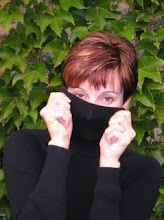December 22

Dormi, Jesu
(The Virgin's Cradle Hymn)
Words by S. T. Coleridge, arranged by John Rutter,
and performed by The Choir of King's College, Cambridge
Dormi, Jesu! Mater ridet
Quae tam dulcem somnum videt,
Dormi, Jesu! blandule!
Si non dormis, Mater plorat,
Inter fila cantans orat,
Blande, veni, somnule.
Sleep, sweet babe! my cares beguiling:
Mother sits beside thee smiling;
Sleep, my darling, tenderly!
If thou sleep not, mother mourneth,
Singing as her wheel she turneth:
Come, soft slumber, balmily!

This is the scene that was waiting to greet me on the hall table when I came down the stairs this morning. Our family's version of The Nativity gets weirder and weirder as the December days wear on... There have been little visits to the manger by our resident "Elf on the Shelf" doll, as well as an assortment of lego and playmobil figures. One day about two years ago, I found that one of the girlies had taken the toy piano out of their dollhouse, and set it up in front of the Holy Mother. When a friend arrived at the front door and got an eyeful of the scene, she asked, "Is Our Lady nearly finished practising her scales?"
Today, behind Mary and Joseph, we find Rocky the Dinosaur (who, I've been assured, is a strict vegetarian.) I love the way his tiny arms stretch out, as if to tap Joseph on the shoulder and ask, "When do I get to hold Him??!"
Then, there is the other outsider... Some people believe that there was a Little Drummer Boy who sought out the Christ Child. We would seem to have attracted a Little Cymbal Monkey, instead. Go figure. Neither option would have been remotely plausable, if you ask me (I've been a post-partum mother, too.) Having just given birth, in a BARN, no less, it would seem HIGHLY unlikely that a woman as sensible and as exhausted as Mary would let either of those two characters darken her doorstep. What that girl would have wanted was for her baby to go to sleep, so that she could get an hour or two of rest, herself.
So, with that in mind, I offer you one of my favourite Christmas "cradle hymns". (I hope it helps.)
 The lyrics of Dormi Jesu were collected by the poet Samuel Taylor Coleridge, while he was visiting Germany in 1799, with his good friend William Wordsworth. His diary states that it was in either Womarshausen or Giebaldhausen, both Roman Catholic villages in the vicinity of Mainz, where he visited a small inn, and came across a small engraving (pictured left). The wood cut illustration was by Hieronymus Wierix, and was entitled "The Virgin Sewing While Angels Rock Her Son to Sleep". Beneath it was a Latin verse that captured Coleridge's imagination to such a degree that he copied it down in his notebook. He later translated the Latin, and wrote a poetic version in English, which became The Virgin's Cradle Hymn. The poem was published in 1817, in his collection, Sibylline Leaves.
The lyrics of Dormi Jesu were collected by the poet Samuel Taylor Coleridge, while he was visiting Germany in 1799, with his good friend William Wordsworth. His diary states that it was in either Womarshausen or Giebaldhausen, both Roman Catholic villages in the vicinity of Mainz, where he visited a small inn, and came across a small engraving (pictured left). The wood cut illustration was by Hieronymus Wierix, and was entitled "The Virgin Sewing While Angels Rock Her Son to Sleep". Beneath it was a Latin verse that captured Coleridge's imagination to such a degree that he copied it down in his notebook. He later translated the Latin, and wrote a poetic version in English, which became The Virgin's Cradle Hymn. The poem was published in 1817, in his collection, Sibylline Leaves.
Today, behind Mary and Joseph, we find Rocky the Dinosaur (who, I've been assured, is a strict vegetarian.) I love the way his tiny arms stretch out, as if to tap Joseph on the shoulder and ask, "When do I get to hold Him??!"
Then, there is the other outsider... Some people believe that there was a Little Drummer Boy who sought out the Christ Child. We would seem to have attracted a Little Cymbal Monkey, instead. Go figure. Neither option would have been remotely plausable, if you ask me (I've been a post-partum mother, too.) Having just given birth, in a BARN, no less, it would seem HIGHLY unlikely that a woman as sensible and as exhausted as Mary would let either of those two characters darken her doorstep. What that girl would have wanted was for her baby to go to sleep, so that she could get an hour or two of rest, herself.
So, with that in mind, I offer you one of my favourite Christmas "cradle hymns". (I hope it helps.)
 The lyrics of Dormi Jesu were collected by the poet Samuel Taylor Coleridge, while he was visiting Germany in 1799, with his good friend William Wordsworth. His diary states that it was in either Womarshausen or Giebaldhausen, both Roman Catholic villages in the vicinity of Mainz, where he visited a small inn, and came across a small engraving (pictured left). The wood cut illustration was by Hieronymus Wierix, and was entitled "The Virgin Sewing While Angels Rock Her Son to Sleep". Beneath it was a Latin verse that captured Coleridge's imagination to such a degree that he copied it down in his notebook. He later translated the Latin, and wrote a poetic version in English, which became The Virgin's Cradle Hymn. The poem was published in 1817, in his collection, Sibylline Leaves.
The lyrics of Dormi Jesu were collected by the poet Samuel Taylor Coleridge, while he was visiting Germany in 1799, with his good friend William Wordsworth. His diary states that it was in either Womarshausen or Giebaldhausen, both Roman Catholic villages in the vicinity of Mainz, where he visited a small inn, and came across a small engraving (pictured left). The wood cut illustration was by Hieronymus Wierix, and was entitled "The Virgin Sewing While Angels Rock Her Son to Sleep". Beneath it was a Latin verse that captured Coleridge's imagination to such a degree that he copied it down in his notebook. He later translated the Latin, and wrote a poetic version in English, which became The Virgin's Cradle Hymn. The poem was published in 1817, in his collection, Sibylline Leaves. 



























No comments:
Post a Comment